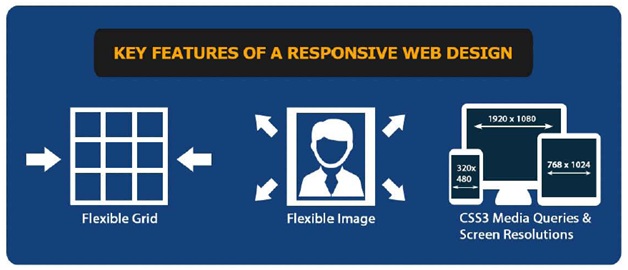Why your website needs to be properly responsive
The way we use the Internet is shifting. We’re increasingly likely to access the web from our mobile devices like phones and tablets rather than our desktop or laptop computers.
The shift towards mobile internet usage means that it’s important for websites to perform just as well on the smaller screens of smartphones as they do on larger devices. Indeed recent changes to Google’s search algorithms rewards mobile-friendly sites with higher rankings in search results.
What is a responsive site?
In the past a website was a website, but now you need to present a different appearance to different devices. Previously this would have needed two or more separate sites, each with its own URL.
A responsive site can detect the type of screen it’s being viewed on and display appropriate content from a single URL. This has benefits for the site’s SEO (Search Engine Optimisation) because there’s no duplicate content so the mobile and desktop versions of a site won’t be in competition with each other.
Updating the site is easier too as there’s no longer a need to change desktop and mobile versions separately. Changes can therefore be rolled out more smoothly and with less developer time.
Benefits for SEO
Many companies specialise in SEO for websites. Firms like London adwords consultant Elevate UK offer services to boost web traffic and turn that traffic into profit. Having a responsive site can help with SEO for a number of reasons.
Firstly it makes navigation easier as the site user is only presented with options that are relevant to their device making it more user friendly. This helps ensure they stay on the site to find the information they need and complete their transaction, not become frustrated and go off elsewhere.
It’s also good for companies that rely on business from their local area. Responsive techniques can make use of the geo-location features of mobile devices. By making a website location aware customers in a particular area can be directed to their local branch of the business or shown deals relevant to their area, helping to turn site visits into sales.
A good responsive site design can help cut the bounce rate – the number of visitors who arrive at the site then leave without viewing other pages – too. If a mobile user is presented with a desktop site that’s difficult to access they less likely to hang around. By presenting them with a properly formatted mobile version you ensure that they stay for longer and you’re more likely to retain their business.
Of course the recent Google changes to searching which benefit mobile sites will also favour web design that’s properly responsive, though it isn’t the only factor.
The web has changed over the last few years, we’re accessing it in different ways and we’re consuming different types of content thanks to faster more reliable connections. There’s no doubt that it will continue to evolve and site design will need to adapt to keep pace, moving to a properly responsive site now will make it easier to stay ahead of the game.


